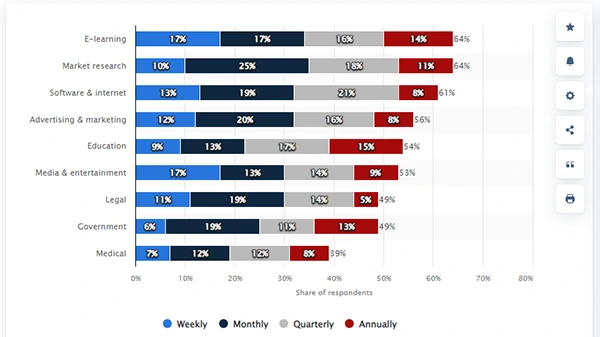A Quick and Easy Method for Automatic Transcription
You want to pen down the memories you gather each day even if it’s about an exciting event or a trip to a peaceful hill.
However, for many this task seems impossible because keeping a diary is so time-consuming and you easily get distracted. Also it’s tough to pull time out of your busy schedule these days.
Well, let me remind you that you are in the 21st century, and when there’s a need there’s innovation.
Automatic Transcription is a software that converts speech into text and that has opened up a whole new world of opportunities for data mining and information.
The use of this feature is not only valid till maintaining your journals but the professionals approach it to reach their deadlines.
In this blog, we’ll discuss a quick and easy method for converting speech or voices into texts.
Also, we stand on the brink of overcoming these challenges and revolutionizing the transcription process with a swift and user-friendly method.

The Evolution of Transcription Technologies
In school times you might have heard of the device named telegraph invented by Samuel Morse in the 19th century.
Well, that was the first attempt at automatic transcription that allowed messages to be sent over long distances with ease until the next chapter of your textbook Alexander Graham Bell patented the telephone.
And then when your ancestors began to speak on their phones and have their voices transmitted over telephone lines at the same time as other sounds were being transmitted through them (like those of birds chirping).

As the journey of innovation has embarked, the engineers had to develop technology that could pick up on individual words quickly enough.
So that they didn’t interfere with one another or get lost in static interference from other sounds around us such as traffic noises or wind blowing against buildings near our homes/offices etc…
Fast forward to the present day, where the demand for converting audio to text has become increasingly prominent.
This extends beyond the realm of English, as there is a growing necessity for technologies that can seamlessly convert spoken content into various languages.
One such application is the ability to convert French audio to text, reflecting the global need for diverse and multilingual transcription solutions.
Do You know?
A person speaks 7 times faster than he writes
A Quick and Easy Method for Automatic Transcription
There are many different tools that you can use or you are looking to create an automated transcription system.
The first step you have to take is to decide if you want or not to use a cloud-based service or a local software application.
If you pick up a cloud-based source, then it will be very easy for you to integrate with other applications and services.

However, if your project is highly sensitive and needs complete security, then it may be best for you to use a local application instead.
Once you have decided on what type of software solution is right for your business, then it’s time to start looking at the various features that each one offers.
One thing that every automatic transcription tool has in common is that they all provide users with audio files that contain speech recognition technology (i.e., an algorithm).
This means that in terms of someone who has hearing difficulties or disabilities to listen back over their conversations so they can decide if they need any further assistance from others around them; this feature makes things much easier!
Overcoming Challenges in Automatic Transcription
Automatic transcription is prone to error, time-consuming, and often expensive—especially when there are a lot of recordings.
There are also security risks associated with this tool: if you don’t have the right permissions to access a file or folder, for example, your computer won’t be able to transcribe it but that doesn’t mean someone else couldn’t get their hands on that same file or folder and use another method to read its contents.
Manual transcription is a more accurate alternative to this automatic software, but it’s also time-consuming and requires trained professionals.
It involves listening to audio files one by one and typing out what you hear.
Because this method requires human ears and brains, it’s not 100% accurate either: there will always be some discrepancies between what was said in the original recording and what you type up on your computer.

Automatic transcription is indeed a formidable challenge, fraught with difficulties in developing accurate software solutions and navigating the intricacies of human transcribers.
Despite the obstacles we have faced, we are on the brink of revolutionizing the way people transcribe voice.
In addition, as part of this transformative landscape, advancements in technology have made it possible to seamlessly convert French audio to text, further expanding the capabilities of its systems.
This promising integration demonstrates the evolving potential to handle diverse languages and accentuate the efficiency of transcription services.
Conclusion
In conclusion, the swift evolution of technology has ushered in an era where automatic transcription stands as a beacon of efficiency and convenience.
This quick and seamless method offers a transformative solution, simplifying the conversion of audio content into written text.
However, besides its speed and ease being undeniable assets, continual advancements, and refinements are imperative to ensure higher accuracy, especially in dealing with nuances, accents, and varied contexts.
As this technology progresses, its potential to revolutionize communication, accessibility, and workflow management remains unparalleled, promising a future where information exchange becomes effortlessly fluid and universally accessible.
This feature has been around for a long period, but it has always been a challenge.
With the recent rise in technology and artificial intelligence, software is becoming more accurate and efficient than ever before.
This new method will allow us to save time as well as money in terms of transcription services.
